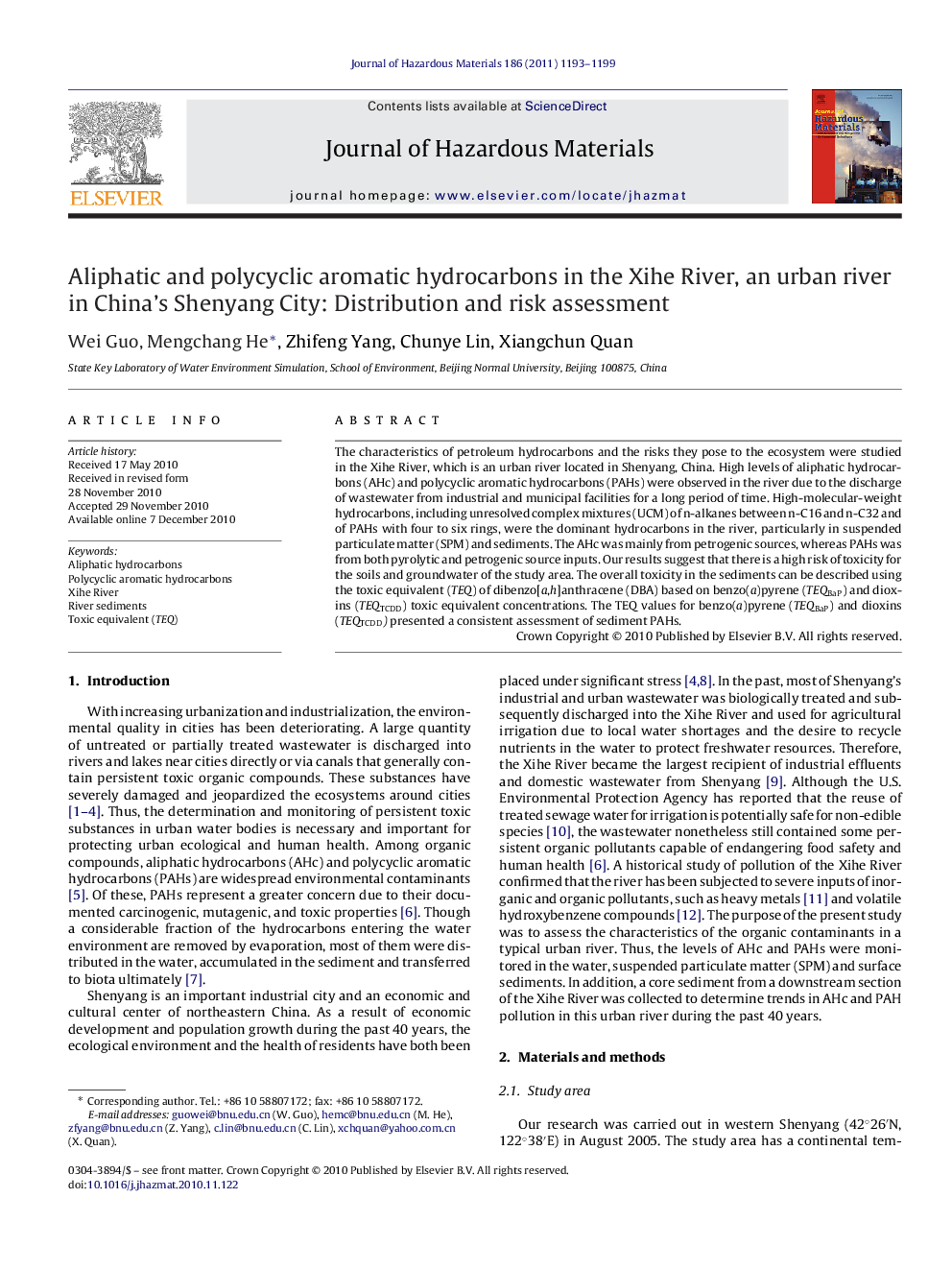| Article ID | Journal | Published Year | Pages | File Type |
|---|---|---|---|---|
| 6972662 | Journal of Hazardous Materials | 2011 | 7 Pages |
Abstract
The characteristics of petroleum hydrocarbons and the risks they pose to the ecosystem were studied in the Xihe River, which is an urban river located in Shenyang, China. High levels of aliphatic hydrocarbons (AHc) and polycyclic aromatic hydrocarbons (PAHs) were observed in the river due to the discharge of wastewater from industrial and municipal facilities for a long period of time. High-molecular-weight hydrocarbons, including unresolved complex mixtures (UCM) of n-alkanes between n-C16 and n-C32 and of PAHs with four to six rings, were the dominant hydrocarbons in the river, particularly in suspended particulate matter (SPM) and sediments. The AHc was mainly from petrogenic sources, whereas PAHs was from both pyrolytic and petrogenic source inputs. Our results suggest that there is a high risk of toxicity for the soils and groundwater of the study area. The overall toxicity in the sediments can be described using the toxic equivalent (TEQ) of dibenzo[a,h]anthracene (DBA) based on benzo(a)pyrene (TEQBaP) and dioxins (TEQTCDD) toxic equivalent concentrations. The TEQ values for benzo(a)pyrene (TEQBaP) and dioxins (TEQTCDD) presented a consistent assessment of sediment PAHs.
Keywords
Related Topics
Physical Sciences and Engineering
Chemical Engineering
Chemical Health and Safety
Authors
Wei Guo, Mengchang He, Zhifeng Yang, Chunye Lin, Xiangchun Quan,
